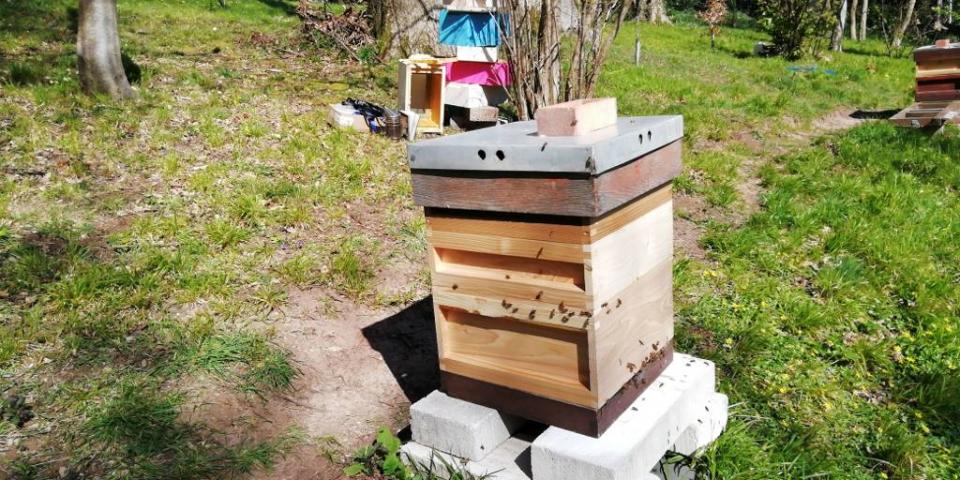- Posted By: beekeeper
- Comments: 0

At last, the long cold days are over and we're enjoying the warmth of the spring sunshine. We may be living through Covid-19 lockdown but our honey bees are going about their business as normal. And at this time of year, colonies are increasing in size and the nectar flow has begun in earnest.
On the last Saturday of March, I managed to do a very quick inspection inside each of my 12 colonies to see how they were doing. All have made it through the winter.
It's always a worrying time. When the colonies hunker down for winter, the queen will have laid eggs that the nurse bees then feed the growing larvae with a richer food than that fed to larvae any other time of the year. This will ensure the winter bees will survive through to the spring for the colony to thrive. They will also be relying on their stores (about 40 lb of honey) and the longer the cold weather lasts, the bees could die of starvation if they run out of food.
Last weekend, I planned to pot 5 over-wintering nucs into their new National hives. Beekeeping always takes me longer than I plan for, so I ended up taking the whole two days to finish transferring all the little colonies over.
I have one colony that I call my nippy bees. Knowing that they can be a little tetchy, I went ready prepared with an action plan. First job at the apiary was to move the whole nuc at a fair distance from their original position in the apiary. In its place, I added a floor/entrance and super, complete with frames and foundation, putting a roof on top giving the flying bees somewhere to come back to. It's the flying bees that are the tetchy ones. That leaves the queen and nurse bees in the nuc which are far more manageable.
With them out of the way, I potted on another nuc into their new National brood box, looking for the queen as I went. Nowhere to be seen, but knew she was somewhere because there were 1-3 day old eggs as well as capped brood. Turning over the nuc roof, there was a large cluster of bees underneath. Surely she wasn't there? Watching the bees on the upturned roof, there she was! Carefully placing her under what's known as a crown of thorns (press in cage to prevent the queen walking off), I got ready to mark her with a little white dot on her thorax as she was last year's queen. Then, stupidly, I knocked the frame, dislodged the cage and off she walked. Could I find her after that? I knew she was still on the nuc roof, so turned it all upside down and knocked them all gently into their new brood box before adding a queen excluder, then super for them to store their nectar and finally pop a roof on top.
Turning to sort out the nippy bees, opening the nuc was a lot easier with the flying bees out of the way. Patiently I went through each frame looking for the queen and also checking for eggs and brood. The latter I found, but again another elusive queen. I couldn't believe it - she was on the upturned nuc roof as well! However, this time, I didn't make the same mistake again. I transferred her onto some drawn foundation so the queen of thorns was able to stay in place and marked her. She too was raised last year, so marked with white which will make her easy to spot when doing weekly inspections.
Now the seven day inspections begin - swarm prevention!
The image used has been published under the terms of a Creative Commons License and is attributed to photo author's name.
